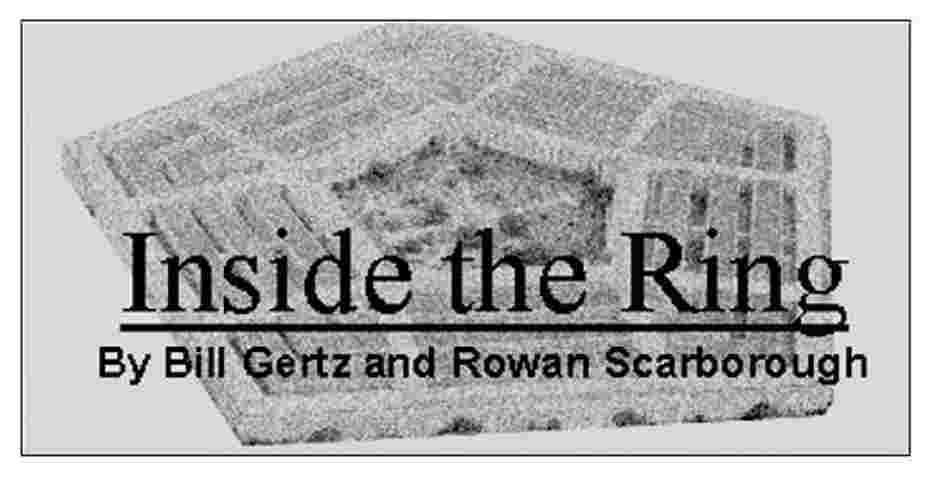|
Return to
|

|
November 11, 2005
Notes from the Pentagon
Evidence tampering
The memo identifies the lab technician as Phillip R. Mills and says that he has been suspended. It does not say why Mr. Mills purportedly on purpose botched DNA samples that presumedly played a major role in criminal prosecutions.
The memo says Mr. Mills originally was suspended from January 2004 to September 2004 while being investigated for DNA tampering. It says he then resumed the misconduct in 2005 by altering evidence, entering false data in lab reports and creating phony documents.
On one occasion, he filed a report saying he had examined evidence when he had not, the memo says. He reported his examination found no DNA match. When another forensic DNA examiner analyzed the same collection of evidence, it yielded a positive match.
The Army document does not identify the affected cases. "Further personnel action is pending against Mr. Phillip R. Mills," the memo says.
Korea lights
Mr. Rumsfeld told reporters Nov. 1 that the photo "gives you a little idea of the contrast between communist North Korea and democratic South."
"Same people, North and South. Same resources, North and South," he said. "The only difference is, the North has a repressive political regime and a command economy, and people are starving, and in the South the free economic system and free political system have created an economic miracle."
Well-heeled recruits
Mr. Kane, matching ZIP codes of recruits to U.S. government estimates of household incomes, found the opposite. The middle and upper classes provided 66 percent of enlisted recruits in 2003. Poor households, those less than $30,000, provided 15 percent. The rest came from lower-middle-class neighborhoods.
What is also interesting is how much the military relies on the South for inductees. The region accounts for 35.6 percent of the U.S. population, yet supplies 41 percent of recruits.
Mr. Kane also blows a hole in liberal press reports that blacks shoulder a disproportionate share of military service. Blacks are only slightly overrepresented in the armed forces, compared with their percentage of population, while whites make up 78 percent, the same as their population share.
"The demographic data on race reveal that military enlistees are not, in fact, more heavily recruited from black neighborhoods," wrote Mr. Kane, an Air Force Academy graduate. "The data also reveal that minorities serve in different proportions, but not because fewer whites are serving. In other words, there is no 'disproportionate share of minorities' serving in the military, as claimed by editorials around the nation in 2003. ... Even if the military had a higher share of African-Americans, it does not follow that those recruits are poorer, from poorer areas, from more urbanized areas, less educated, or from less educated areas. Indeed, none of these other claims can be substantiated."
American power
"One of the reasons we are not threatened by large armies, navies or air forces is because the world knows that we have the most capable large Army,Navy, Air Force and Marine Corps of any country in the history of the world," Mr. Rumsfeld said to cheers and applause from about 1,000 troops.
"And it's not the kind of thing you develop in 15 minutes," he said. "You either have it or you don't. And we have it, and we darn well better keep it as a deterrent and as a stabilizing force in the world."
Mr. Rumsfeld said in the current period and for the immediate future, threats will come from indirect attacks.
U.S. forces are being restructured to deter "every conceivable asymmetrical, unconventional" type of attack and to deter and defend against them, he said.
Pantano, the author
Simon & Schuster's new imprint, Threshold Editions, will publish "Warlord: No Better Friend, No Worse Enemy" next June. Threshold Editions Editor in Chief Mary Matalin, who calls Mr. Pantano a "great American," landed the book.
"I have a story to tell about fighting in two wars for your country and then having to come home and fight another battle for your life and good name against the very Corps that you have dedicated our life to," Mr. Pantano said.
Bush's proclamation
Correction
|
|
Inside the Ring Archives
1999 Columns 2000 Columns 2001 Columns 2002 Columns 2003 Columns 2004 Columns 2005 Columns |